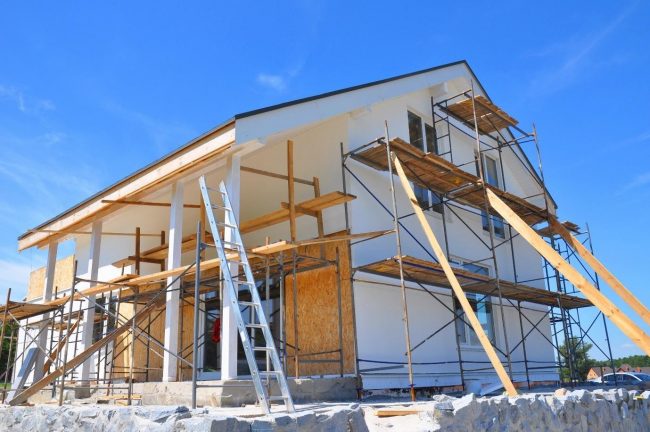
Building a new home can be both exhilarating and tedious. While building your dream home, you must understand the procedure and overcome the hurdles and difficulties. You should be aware that the house-building procedure differs from one area to the next and from one builder to the other.

When looking for a construction company to help you realize your vision, you need not look further than Brick&Bolt headquartered in Bengaluru, the company provides complete and start to finish aka a design-to-build service that enables real time tracking, communication, quality checks and updates on projects from day one till the final project delivery day. To learn more about the step by step house construction process – A breakdown of all building stages, read the entire article.
Construction projects are not completed in a single, easy step, but rather as a series of events or actions that must be accomplished over time. Breaking down a large-scale project into smaller events and activities is one way of bringing it to life. Do you need to commission a report on the energy-efficiency of your buildings, delivered on time and within budget, ensure you get a commissioning specialist like ECS
There is a lot of work to be done before the commencement of the construction. Like planning, designing, appointing the contractors, estimating the quantity of materials, etc.
A standard construction project, as a rule, has the following five significant house construction steps: Commencement, planning, execution, performance and supervision, and closure
1: Commencement phase of the construction project
First and foremost, we must evaluate and assess the strategy in order to determine whether it is feasible and, if not, what efforts should be made to make it work. The project’s goal or need is highlighted here. A reasonable outcome to the need is achieved with suggested arrangements and alternatives. You should be looking into every alternative unbiasedly.
2: Planning phase of the construction project
The planning stage includes further improvement of the project in detail to meet the owner’s requirements. The undertaker’s errands and assets are distinguished, alongside the methodology for carrying out the project. A project plan is laid out which includes tasks, undertakings, circumstances, and time spans needed for each and every task. This is where CPM and PERT come into play.
3: Execution phase of the construction project
This is the execution stage, where the plan is kicked off and crafted by the workers and site engineers. It is fundamental to keep up control and supervise the quality of work during every execution stage.
Progress ought to be persistently observed and suitable changes which differ from the first arrangement should be made and recorded. A supervisor is a person who is responsible for quality and quantity progress.
4: Execution and monitoring phase of the construction project
This stage is completely identified with the estimation of progress and inspection of whether the work is progressing according to the estimated quality and quantity. This stage routinely occurs simultaneously with the execution stage.
5: Conclusion phase of the construction project
During the last conclusion, the significance is on giving the last expectations to the client, that is:
- Giving over project documentation to the business
- End of provider contracts
- Delivering project assets
- Provide the conclusion of the project to all partners
Last is to lead drills and understand the analysis of the project to inspect what worked out positively and what didn’t. This kind of investigation would increase the experience of the project associates, which will help in future projects.
Here is a step-by-step timeline, starting from pre-construction to post-construction:
- Pre-construction stage
- Procurement stage
- Construction stage
- Post-construction stage
Pre-construction stage
During the pre-construction stage, a work-out plan is made, a budget plan and course of events are settled upon, a plan for when the task will be started and finished, a permit is obtained, and the acquisition of both workers and resources takes place.
The pre-development stage pertains to a series of assignments and occasions that either happen or should happen preceding the beginning of construction. Although this phase isn’t often considered as a part of a construction project but is really an essential segment of all modern cutting-edge construction projects.
Procurement stage
In house construction stages, the procurement stage is the one where we acquire laborers and products expected to bring the construction project to culmination in an opportune and fulfilling way.
A construction firm should adopt a strategy to acquire procurement by buying the supplies needed in the most economical way. The procurement stage needs to contemplate different variables, like the timeline of events, budget plan and nature of the project.
Construction stage
The construction phase is typically the phase of physical activities like site clearing, excavation, building, etc. It also includes demolition, landscaping, refurbishing, and associated activities.
This is the phase where contractors actually come into play. He is responsible for the construction work and also in large projects a supervisor is appointed to check the progress of the work.
This is the phase where contractors actually come into play. He is responsible for the construction work and also in large projects a supervisor is appointed to check the progress of the work.
This stage starts from the point when the client hands over the property to the contractor to the stage when the completed project is handed back over to the owner.
Post construction stage
Last, yet absolutely, not least, the post-construction stage. Since the project has been finished, the project manager will consult the client for any modifications or make improvements to make things more efficient.
Conclusion
That is to keep going forward in the long cycle of planning and finishing a house construction project. Now, it is additionally a decent practice to do a post-construction survey which could assist the various agents with recognizing any assignments that weren’t finished, break down why this occurred and set up a rundown of experiences for what’s to come.